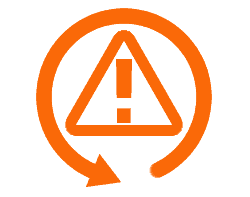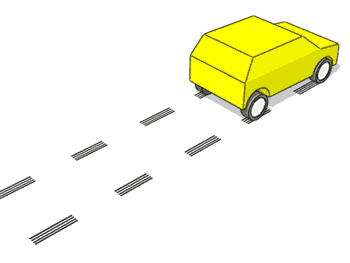Snow & ice driving myths
Myth 1: ABS is a bad thing in winter conditions

It is true that when ABS is operating in slippery conditions, your stopping distance is likely to be increased. However, ABS prevents wheel lock-up and allows you to continue to steer effectively rather than sliding out of control – and this is usually beneficial when trying to avoid obstacles, people and other cars in an emergency braking situation. It’s very unlikely that you’ll be able to disable ABS in a modern car so it’s best to learn how to use it effectively, understand its limitations and accept that it’s a well proven safety system that could save your life.
Click here to learn more about ABS systems
Myth 2: You should turn off traction control when it snows

Most traction control systems (such as ETC, DSC, ESP) can reduce engine power or apply the brakes in response to spinning wheels. When driving in winter conditions, it is especially beneficial to keep these systems active as they are much more capable of maintaining traction (and keeping you on the road) than most humans. However there are occasions when a reduction in power can hinder progress (for example when stuck in deep snow), and only then should these systems be temporarily switched off. If you have tried pulling away unsuccessfully – try turning the systems off and having another go. If this doesn’t work you’ll need to consider your options.
Click here to learn more about traction control systems
Myth 3: A lower gear is better in slippery conditions

Pulling away
When pulling away in slippery conditions, selecting the lowest possible gear is usually not the best option. Lower gears provide more torque at the wheels and this extra twisting force is more likely to cause wheel-spin and prevent progress. Selecting the highest practical gear reduces torque, and gives you the best chance of success. Pull away with a light throttle for best results, and keep in a high gear especially when climbing hills.
Driving down slippery hills
When descending a slippery hill, the engine braking generated while in a lower gear can be very helpful. Using the brakes encourages the wheels to lock, whereas engine braking helps reduce speed while keeping the wheels rotating – this can help prevent wheel lock-up and maintain your ability to steer without having to resort to ABS.
While cruising
When cruising you need to strike a balance between the ability to call upon engine braking when necessary (when lifting off the throttle) and keeping the chances of wheel-spin to a minimum. In this case a compromise is needed and a gear which maintains an engine speed of between 2000 and 3000 rpm is a good rule of thumb.
Myth 4: Cadence braking is a useful technique in modern cars

Cadence braking is the process of rhythmically applying and releasing the brakes in order to get a compromise between steering and braking performance. However this technique is only useful in cars without ABS fitted (ABS performs a similar process, but much faster and more accurately). If you need to emergency brake in modern vehicles, the best results are achieved by pressing the brake pedal firmly and keeping pressure on the pedal until you have come to a halt.
Cadence braking is useful to alert drivers vis-à-vis brake lights that you are slowing down.